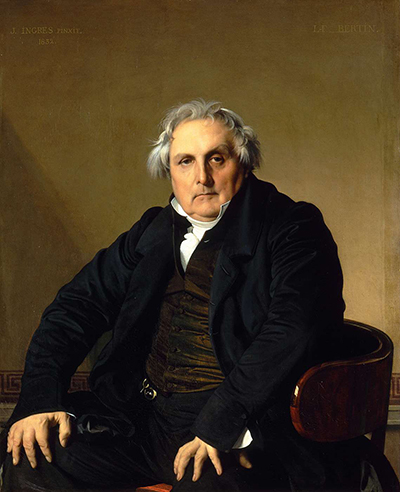This Portrait of Monsieur Bertin is amongst Ingres' most famous paintings and was completed after a large period of preparation which spawned several detailed study drawings.
Louis-François Bertin, the subject of this portrait, was a French writer who also performed several other significant roles within high society. It is regarded by many as Ingres' finest portrait of a male, quite a claim considering the number of high quality portrait paintings that he produced across his career. Bertin himself was also an art collector and so would likely have commissioned this piece. He would have been in his mid to late sixties at the time that this painting was produced. The portrait can now be found as part of the extraordinary collection of the Louvre in Paris. An interesting aspect to this piece is that at this time in his career Ingres was first and foremost a History painter, and seldom desired to produce commissions on request - the difference here was that model and artist were friends and so he decided to go ahead with the work.
This close connection would have helped the artist to accurately communicate the personality of his subject. Bertin looks confident, as he would have been when considering his strong role in society and considerable numbers of key connections to the French Upper-Middle classes. He was known to also be a warm individual with those that he allowed into his close circle and perhaps that is evident in this painting. Sometimes the intricacies of a portrait can only be understood by those who know the individual well, which Ingres did.
Bertin is accurately displayed here as portly, but well dressed. One can see from his face that he would have experienced some extraordinary situations in his life and he now looks down on his past with a confident satisfaction. The artist chose to place him in front of a simple brown background which avoids taking any of the attention away from the key focal point of the piece. One can just make out detail on the chair in which he sits, providing us a small clue as to the interior of the rest of the room in which he sat for this piece.




